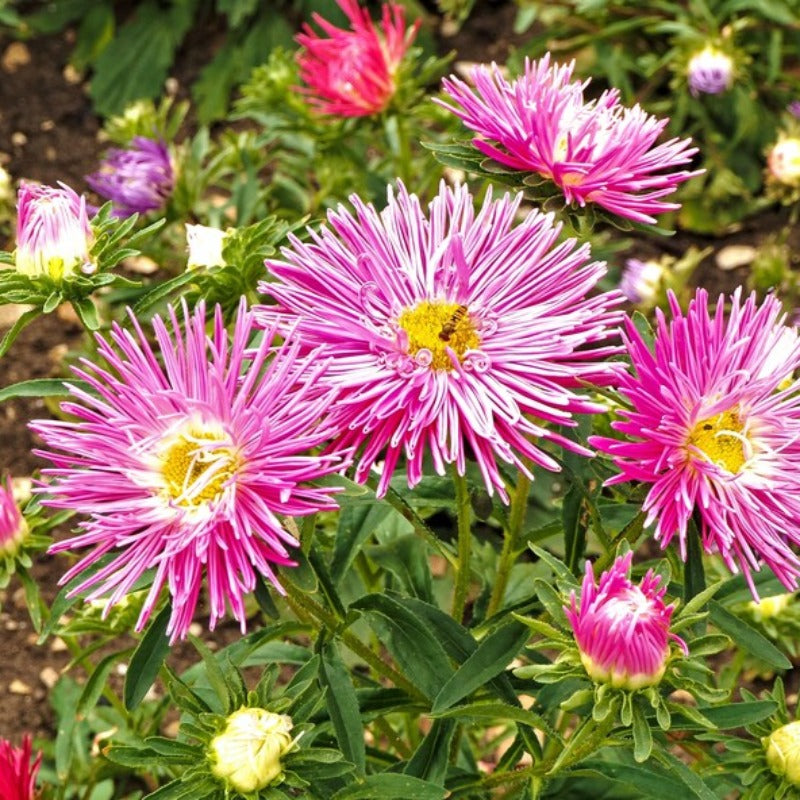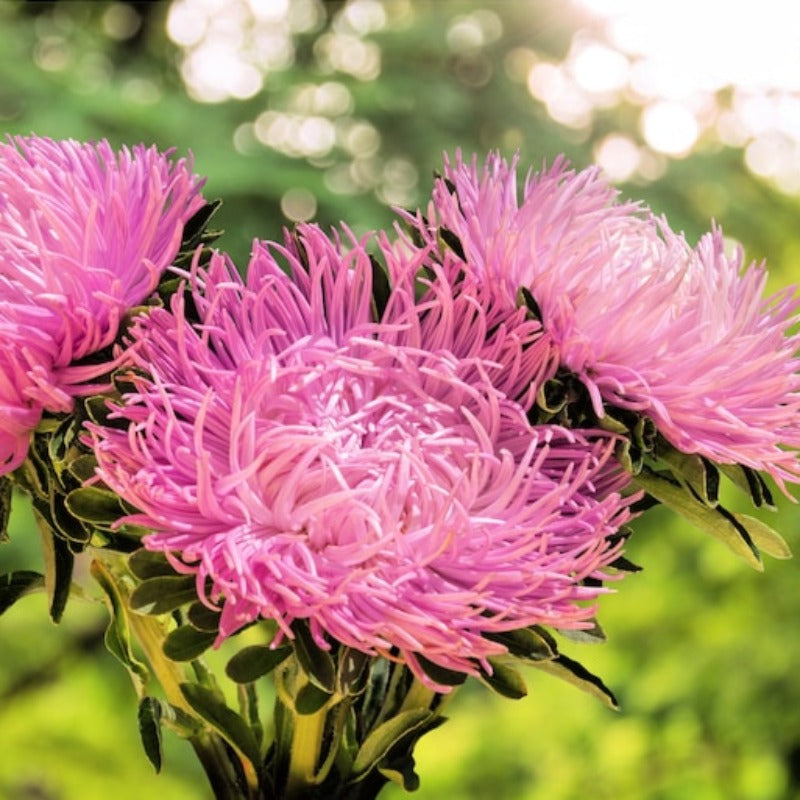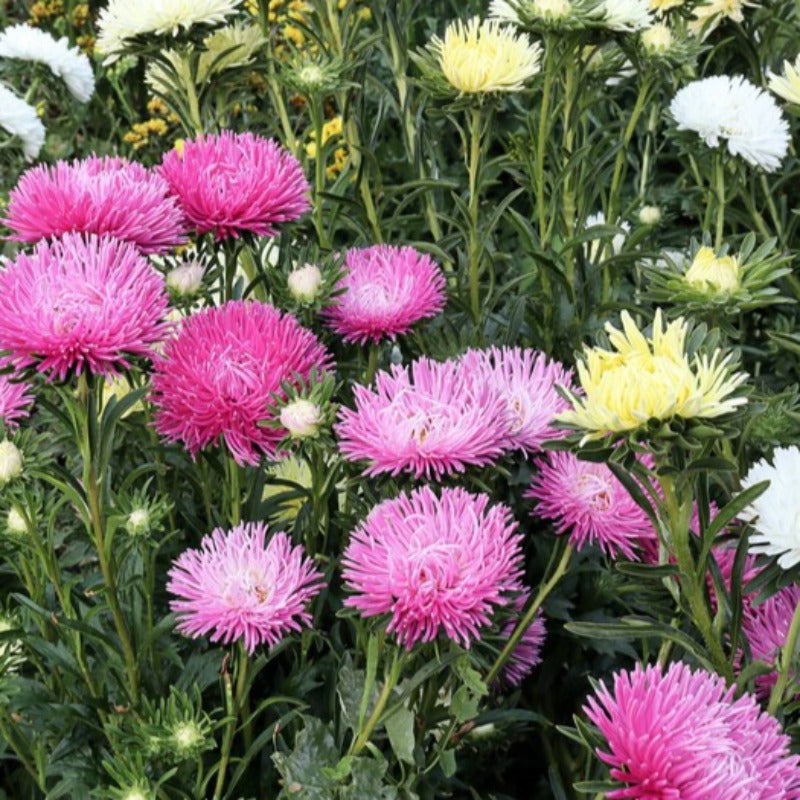- Historical context: The Rose Needle Aster, also known as Callistephus chinensis, is a member of the Asteraceae family. It is a popular ornamental plant, often used in gardens and floral arrangements.
- Geographical origination: The Rose Needle Aster is native to China, hence the species name 'chinensis'.
- Relevant cultural significance: In China, the Rose Needle Aster is often associated with autumn and is a common feature in traditional Chinese gardens.
- Time period of discovery: The exact time period of discovery is not well-documented, but it has been cultivated in China for centuries.
- Original habitat: The Rose Needle Aster is native to the temperate regions of China.
- Notable historical uses: Historically, the Rose Needle Aster has been used for ornamental purposes due to its vibrant colors and unique needle-like petals.
- Ideal temperature range: The Rose Needle Aster prefers a temperature range of 60-75 degrees Fahrenheit.
- Soil type: It prefers well-drained soil with a pH between 6.0 and 7.5.
- Sunlight requirements: The plant requires full sun to partial shade.
- Watering needs: Regular watering is necessary, but avoid overwatering as this can lead to root rot.
- Planting season: Seeds should be sown in late spring or early summer.
- Germination time: Seeds typically germinate in 1-2 weeks.
- Growth cycle duration: The plant reaches maturity in 70-80 days.
- Common pests and diseases: Common pests include aphids and slugs. Diseases include powdery mildew and leaf spot.
- Companion planting advice: Good companion plants include marigolds and cosmos, which can help deter pests.
- Common challenges and solutions: Overwatering can lead to root rot. To prevent this, ensure the soil is well-drained and do not water excessively.
- Nutritional values: As an ornamental plant, the Rose Needle Aster is not typically consumed and therefore does not have notable nutritional value.
- Health benefits: There are no known health benefits associated with the Rose Needle Aster.
- Culinary uses: The Rose Needle Aster is not typically used in cooking.
- Medicinal uses: While some members of the Asteraceae family have medicinal uses, the Rose Needle Aster is not known to have any medicinal properties.
- Other unique advantages: The Rose Needle Aster is a beautiful ornamental plant, adding color and texture to gardens and floral arrangements. It is also a good plant for attracting butterflies.








